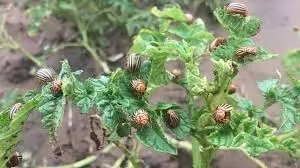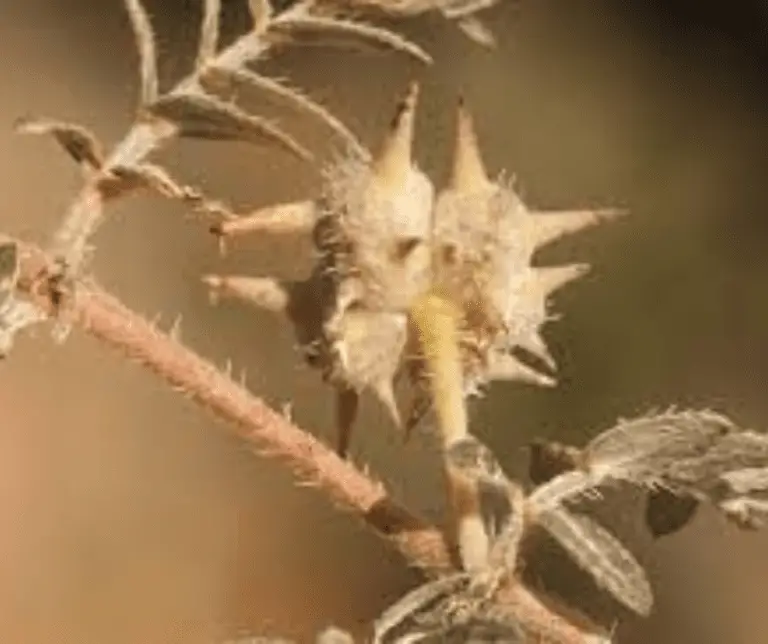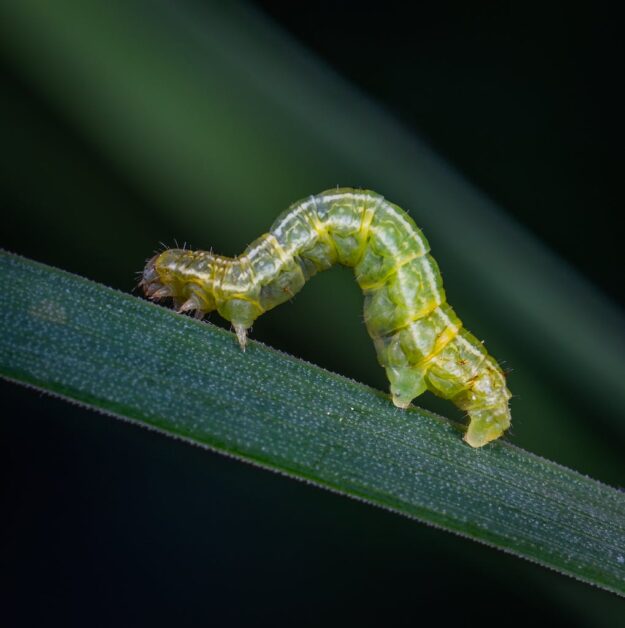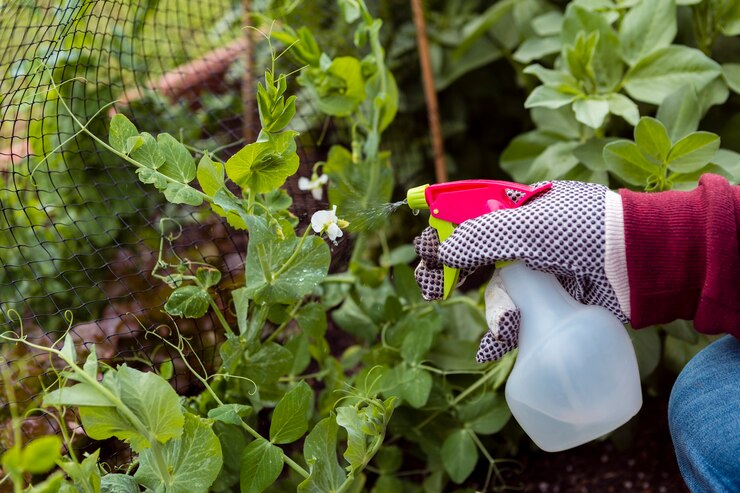Potato Bug: Eliminating Leptinotarsa Decemlineata
Table of Contents
Identifying the Potato Bug
The Potato Bug, also known as the Colorado Potato Beetle or Leptinotarsa decemlineata, is a notorious pest that can wreak havoc on potato crops and other related plants. This beetle is easily identifiable by its distinctive yellow-orange color with five bold black stripes running along its wing covers. The adult Potato Bug measures about 10 millimeters in length and has a rounded, dome-shaped body. Its larvae, on the other hand, are reddish-orange in color with black spots and reach up to 15 millimeters in length. These voracious feeders can quickly defoliate an entire plant if left unchecked, making early identification crucial for effective pest management strategies.
One key characteristic to look out for when identifying the Potato Bug is its feeding behavior. Both adult beetles and larvae consume the foliage of potato plants, leaving behind tell-tale signs of skeletonized leaves. Additionally, the presence of bright orange eggs clustered on the undersides of leaves is another indicator of a potential Potato Bug infestation. By closely monitoring your plants and recognizing these distinct physical features and feeding patterns, you can take proactive steps to mitigate the damage caused by this destructive pest.

Lifecycle of the Potato Bug
The potato bug, scientifically known as Leptinotarsa decemlineata, undergoes a fascinating lifecycle that spans four distinct stages: egg, larva, pupa, and adult. The lifecycle typically begins with the female potato bug laying clusters of orange-yellow eggs on the underside of potato leaves. These eggs hatch into larvae, which are small, red-orange in color, and voracious feeders. As the larvae grow, they molt several times before entering the pupal stage, where they undergo metamorphosis within a protective cocoon. Finally, the adult potato bugs emerge from the pupae, showcasing their distinctive red-orange bodies with black stripes and spots, ready to continue the cycle by mating and laying eggs.
Throughout its lifecycle, the potato bug is primarily focused on one task: feeding on the foliage of potato plants. This feeding behavior not only sustains the insect through its development but also has significant implications for the health and productivity of potato crops. Understanding the intricacies of the potato bug’s lifecycle is crucial for implementing effective control measures to mitigate the damage caused by this pest and safeguard potato yields.
Damage Caused by the Potato Bug
Potato bugs, also known as Colorado potato beetles, can wreak havoc on potato crops and other related plants. These voracious pests have the potential to defoliate entire plants if left unchecked. Their damage is characterized by skeletonized leaves, which can significantly reduce the plant’s ability to photosynthesize and produce energy. Additionally, the larvae of the potato bug are equally destructive, feeding on the plant’s foliage and causing further harm.
Moreover, prolonged infestations of potato bugs can lead to stunted plant growth, reduced yields, and even plant death in severe cases. Farmers and gardeners alike must remain vigilant in monitoring for the presence of these pests and take proactive measures to mitigate their impact. Understanding the damage caused by potato bugs is crucial in developing effective strategies for pest management and protecting valuable crops.

Natural Predators of the Potato Bug
Potato bugs, also known as Colorado potato beetles, are a common garden pest that can wreak havoc on potato crops. However, nature has its own way of keeping the potato bug population in check through natural predators. One of the most effective predators of the potato bug is the spined soldier bug (Podisus maculiventris). These predatory insects feed on potato bug eggs, larvae, and adults, helping to reduce their numbers and protect potato plants from damage.
Another natural predator of the potato bug is the ground beetle (Carabidae family). Ground beetles are voracious predators that consume a variety of pests, including potato bugs. By introducing ground beetles into your garden or agricultural field, you can help control potato bug populations in a natural and environmentally friendly way. Additionally, birds such as sparrows and starlings also feed on potato bugs, further contributing to the natural control of this pest. By encouraging these natural predators in your garden, you can help maintain a balanced ecosystem and reduce the need for chemical pesticides.
Preventative Measures Against the Potato Bug
Effective preventative measures against the potato bug include crop rotation and intercropping. By rotating potato crops with non-host plants, you disrupt the pest’s life cycle and reduce its population density. Intercropping potatoes with companion plants that repel potato bugs, such as marigolds, can also deter infestations. Additionally, practicing good garden hygiene by removing plant debris and weeds can eliminate hiding places for the pests and reduce their numbers naturally. These proactive strategies can help minimize the need for chemical controls and promote a healthier, more resilient garden ecosystem.
Here are the preventative measures you can take to keep potato bugs away from your garden:
| Preventative Measure | Description |
| Daily Inspection | Regularly walk through your garden rows to scan for adult potato beetles. Early detection helps prevent infestations. |
| Plant Resistant Cultivars | If potato bugs are common in your area or you’ve had trouble before, consider planting resistant cultivars. These varieties are less susceptible to infestations. |
| Protect Your Plants | Use physical barriers like row covers or netting to shield your plants from potato bugs. |
| Crop Rotation | Avoid planting potatoes in the same spot year after year. Potato bugs overwinter in the soil, so rotating crops helps disrupt their life cycle. |
| Mulch Deeply | After your potatoes grow foliage, spread a layer of straw mulch. This helps repel beetles and keeps them away from your crops. |
| Natural Predators | Introduce beneficial insects like ladybugs, which are natural predators of potato beetles. They can help control the beetle population. |
| Plant Deterrents | Consider planting catnip, sage, or tansy around your potato crops. These herbs naturally discourage potato bugs from infesting your plants. |
Cultural Control Methods for the Potato Bug
Cultural control methods play a crucial role in managing potato bug infestations in gardens and farms. One effective approach is crop rotation, where planting potatoes in different locations each year can disrupt the life cycle of these pests, reducing their numbers over time. Additionally, practicing good garden hygiene by removing plant debris and weeds can help eliminate potential hiding spots for potato bugs and other pests, reducing the risk of infestations.
Another cultural control method is the use of floating row covers to physically block potato bugs from reaching potato plants. These covers create a barrier that prevents adult beetles from laying eggs on the foliage, thereby reducing the population of potato bugs in the growing area. By implementing these cultural control methods, gardeners can effectively manage potato bug populations without relying on chemical pesticides, promoting a more sustainable and environmentally-friendly approach to pest control.
Biological Control of the Potato Bug
Biological control of the potato bug involves utilizing natural enemies to manage infestations without relying on synthetic pesticides. One effective biological control method for the potato bug is the use of parasitic wasps, such as Telenomus podisi, which lay eggs inside the eggs of the potato bug, ultimately leading to their destruction. Another approach is the introduction of predatory insects like lady beetles and lacewings, which feed on the potato bug at various stages of its life cycle. These biological agents help maintain a balance in the ecosystem and reduce the population of potato bugs, preventing extensive damage to crops.
Integrating biological control methods with other pest management strategies can improve the overall effectiveness of controlling potato bug infestations while minimizing environmental impact. By fostering a diverse and stable ecosystem in agricultural settings, growers can harness the power of natural predators to combat potato bug populations sustainably. Implementing biological control measures not only provides a long-term solution to potato bug management but also contributes to the conservation of beneficial insect species essential for maintaining ecological equilibrium in farming systems.
Here are some biological control methods to manage potato bugs in your garden:
| Control Method | Description |
| Beneficial Insects | Having beneficial insects in the garden, such as ladybugs, parasitic wasps, predatory stink bugs, and lacewings, can help control the potato bug population. These insects consume the bugs and their eggs. |
| Beneficial Nematodes | Beneficial nematodes are useful, especially if you have overwintering potato bugs. They can help reduce the population of these pests. |
Chemical Control Options for the Potato Bug
Chemical control options can be effective in managing potato bug infestations, especially when populations are high and causing significant damage to crops. Insecticides containing active ingredients such as pyrethroids, neonicotinoids, and carbamates are commonly used for controlling potato bugs. These chemicals target the nervous system of the pests, leading to paralysis and eventual death. It is important to follow label instructions carefully when applying insecticides to ensure maximum efficacy and safety for both humans and the environment.
While chemical control can provide quick results, it is crucial to consider the potential impact on beneficial insects, pollinators, and the overall ecosystem. Over-reliance on pesticides can also lead to the development of resistance in potato bug populations, making future control efforts more challenging. Integrated pest management (IPM) approaches that incorporate multiple tactics, including chemical control alongside cultural, biological, and preventative measures, are recommended to achieve sustainable pest management while minimizing negative effects on the environment.
Integrated Pest Management Strategies for the Potato Bug
The Integrated Pest Management (IPM) approach for controlling the potato bug involves a combination of various strategies to effectively manage infestations while minimizing the reliance on chemical pesticides. One key aspect of IPM is regular monitoring of pest populations to determine the severity of the infestation and to implement timely control measures. By using traps, visual inspections, and scouting techniques, gardeners can assess the level of potato bug activity and decide on the most appropriate course of action.
Cultural practices play a crucial role in IPM strategies for the potato bug. Practices such as crop rotation, weed management, and sanitation can help deter potato bugs from establishing populations in the garden or field. Planting trap crops that attract and concentrate potato bugs away from main crops can also be an effective method to reduce pest pressure and limit damage to valuable plants. Implementing these cultural controls as part of an integrated approach can help mitigate the impact of potato bugs on agricultural and horticultural crops.
Organic Solutions for Managing the Potato Bug
Organic solutions for managing the potato bug offer eco-friendly alternatives to conventional pest control methods, promoting sustainable gardening practices. Utilizing natural predators, such as ladybugs and parasitic wasps, can help keep potato bug populations in check without harming beneficial insects. Additionally, planting trap crops like marigolds or garlic can attract potato bugs away from main crops, reducing the likelihood of infestations.
Implementing crop rotation and intercropping techniques can further deter potato bugs, disrupting their lifecycle and lowering their numbers over time. By combining these organic strategies with proper soil health management and regular monitoring, gardeners can effectively manage potato bug infestations while maintaining a healthy and balanced ecosystem.
Research on Potato Bug Resistance
Potato bugs, also known as Colorado potato beetles, pose a significant threat to potato crops worldwide due to their ability to develop resistance to pesticides. Research on potato bug resistance aims to understand the mechanisms behind their ability to adapt and survive chemical treatments. By studying the genetic makeup of resistant populations, scientists hope to develop strategies to combat this pest effectively.
Recent studies have shown that potato bugs can rapidly evolve resistance to common insecticides through a combination of genetic mutations and behavioral adaptations. This poses a challenge for farmers and researchers alike, highlighting the urgent need for innovative solutions to control these resilient pests. By delving deeper into the molecular mechanisms of resistance, scientists strive to devise strategies that can potentially outsmart the potato bug’s ability to overcome control measures.
Potato Bug Infestation Management
To effectively manage a potato bug infestation in your garden, it is crucial to implement a combination of control methods. Begin by regularly inspecting your plants for any signs of potato bug presence, such as skeletonized leaves or clusters of yellow eggs underneath the foliage. Handpick and destroy any adult bugs, larvae, or eggs that you encounter to reduce the population. Additionally, encourage natural predators like ladybugs, lacewings, and predatory beetles to help keep the potato bug population in check.
Implementing preventative measures can also help minimize the risk of potato bug infestations. Rotate your crops annually to disrupt the bugs’ lifecycle and reduce their ability to establish large populations in the same area. Utilize mulch to discourage the bugs from laying eggs in the soil, and consider planting companion plants like marigolds or garlic that repel potato bugs. By combining vigilance, proactive strategies, and natural solutions, you can effectively manage and control potato bug infestations in your garden.
Economic Impact of the Potato Bug
The economic impact of the potato bug, also known as the Colorado potato beetle (Leptinotarsa decemlineata), is a significant concern for farmers and agricultural industries around the world. This destructive pest can cause extensive damage to potato crops, leading to yield losses and increased production costs. In the United States alone, it is estimated that potato growers spend millions of dollars each year on controlling and managing infestations of the potato bug.
The economic repercussions of the potato bug infestation extend beyond the direct costs of pest control measures. Lower crop yields resulting from damage caused by the potato bug can lead to reduced profits for farmers and increased prices for consumers. Additionally, the presence of the potato bug in potato fields can also impact export markets, as buyers may be wary of purchasing crops that show signs of infestation. Efforts to mitigate the economic impact of the potato bug involve a combination of cultural, biological, and chemical control methods to effectively manage infestations and safeguard potato crops.
Below is the summary of the economic impact of potato bug:
| Aspect | Impact |
| Increased Control Costs and Yield Losses due to Insecticide Resistance | In Michigan, insecticide resistance in the Colorado potato beetle led to control costs of up to $306 per hectare and yield losses of up to 12.2% statewide and 20.5% in seriously affected areas. The total costs plus losses to the industry in 1994 amounted to $13.3 million (equivalent to 13.7% of the crop value). Integrated pest management practices were adopted to mitigate these losses. Long-term increased costs to the Michigan industry due to insecticide resistance are estimated at $0.9 to $1.4 million per year. |
| Impact on Potato Tuber Yields | Both adult beetles and larvae of the Colorado potato beetle reduce potato tuber yields by devouring foliage. If damage occurs prior to tuber formation, yield losses can be as high as 100%. |
The potato bug remains a significant challenge for potato growers, impacting both crop health and economic viability.
Global Distribution of the Potato Bug
The potato bug, known scientifically as Leptinotarsa decemlineata, has a wide global distribution, adapting to various climates and regions. This pest is predominantly found in temperate regions worldwide, thriving in environments where its primary host plants, including potatoes, tomatoes, and eggplants, are cultivated. The potato bug’s adaptability and resilience have allowed it to establish populations across North America, Europe, Asia, and parts of Africa, posing a significant threat to potato crops in these areas.
In North America, the potato bug is particularly prevalent, with infestations reported in the United States and Canada. European countries such as France, Germany, and Russia also grapple with the challenges posed by this invasive insect. Additionally, regions in Asia, such as China and India, have witnessed the spread of the potato bug, impacting agricultural productivity and necessitating effective pest management strategies to mitigate crop losses.
Future Outlook for Controlling the Potato Bug
The future outlook for controlling the potato bug remains a subject of ongoing research and exploration within the agricultural community. Scientists are focusing on developing innovative and sustainable methods to manage potato bug populations effectively while minimizing environmental impact. Advancements in biological control agents, such as parasitic wasps and nematodes, show promising potential in offering natural solutions for potato bug infestations. Additionally, the integration of cultural practices, like crop rotation and intercropping, could further contribute to reducing the reliance on chemical pesticides for potato bug control.
As we progress towards a more environmentally conscious approach to pest management, the future of controlling the potato bug lies in the synergy of various strategies. By combining biological, cultural, and possibly chemical control methods judiciously, farmers and gardeners can potentially mitigate potato bug damage while fostering sustainable agricultural practices. Continuous research and collaboration among experts in the field will be crucial in shaping effective and holistic solutions for the management of potato bug populations in the years to come.
Let’s explore the future outlook for controlling potato bug.
| Aspect | Future Outlook |
| Neonicotinoid Resistance | Neonicotinoid seed treatments, once effective, are now losing their effectiveness against the Colorado potato beetle. Resistance to neonicotinoids is growing, and field-level failures are becoming more common. |
| Alternative Treatments | Researchers are exploring alternatives such as Bacillus thuringiensis (Bt) and RNA interference (RNAi). Bt has shown promise in controlling pests, and RNAi holds great potential for managing the Colorado potato beetle (potato bug). |
| Management Strategies | Integrated approaches combining seed treatments, in-furrow, and foliar insecticides are being evaluated. Some treatments like Verimark, have not performed as expected, while others, like the foliar insecticide Delegate, have shown good control. |
| Cultural Practices | Crop rotation remains essential to prevent beetle buildup. Mulching and other cultural practices can help reduce beetle presence. |
Resources for Further Information on the Potato Bug
For further information on the potato bug and how to manage infestations effectively, consider consulting reputable sources such as academic publications, government agricultural extension services, and university entomology departments. These resources often provide in-depth insights into the biology, behavior, and control methods for potato bugs, offering valuable guidance for gardeners and farmers alike. Additionally, online forums and communities dedicated to pest management in agriculture can be excellent platforms to exchange experiences and gather practical tips from individuals dealing with potato bug issues.
Another useful resource for expanding your knowledge on potato bugs is to attend workshops, webinars, and conferences conducted by entomologists, crop protection specialists, and integrated pest management experts. These events offer a great opportunity to interact with professionals in the field, learn about the latest research findings, and explore innovative strategies for combating potato bug infestations sustainably. By staying informed and utilizing a combination of scientific knowledge and practical experience, you can effectively protect your crops from the detrimental impact of potato bugs.
To Know More About Potato Bug, Watch This Video.
Can the potato bug cause harm to humans?
No, the potato bug does not pose any threat to humans.
Are there any specific plant species that are immune to potato bug infestations?
While some plants may be more resistant to potato bugs than others, there are no known plant species that are completely immune to infestations.
How quickly can a potato bug population multiply?
Potato bugs have the ability to reproduce rapidly, with females laying up to 500 eggs in a single season.
Are there any cultural practices that can help deter potato bugs from infesting plants?
Yes, planting crops in rotation, using mulch, and maintaining healthy soil can help deter potato bugs from infesting plants.
Can potato bugs be beneficial in any way to the ecosystem?
While potato bugs are considered pests in agricultural settings, they do play a role in nutrient cycling and decomposition in natural ecosystems.






